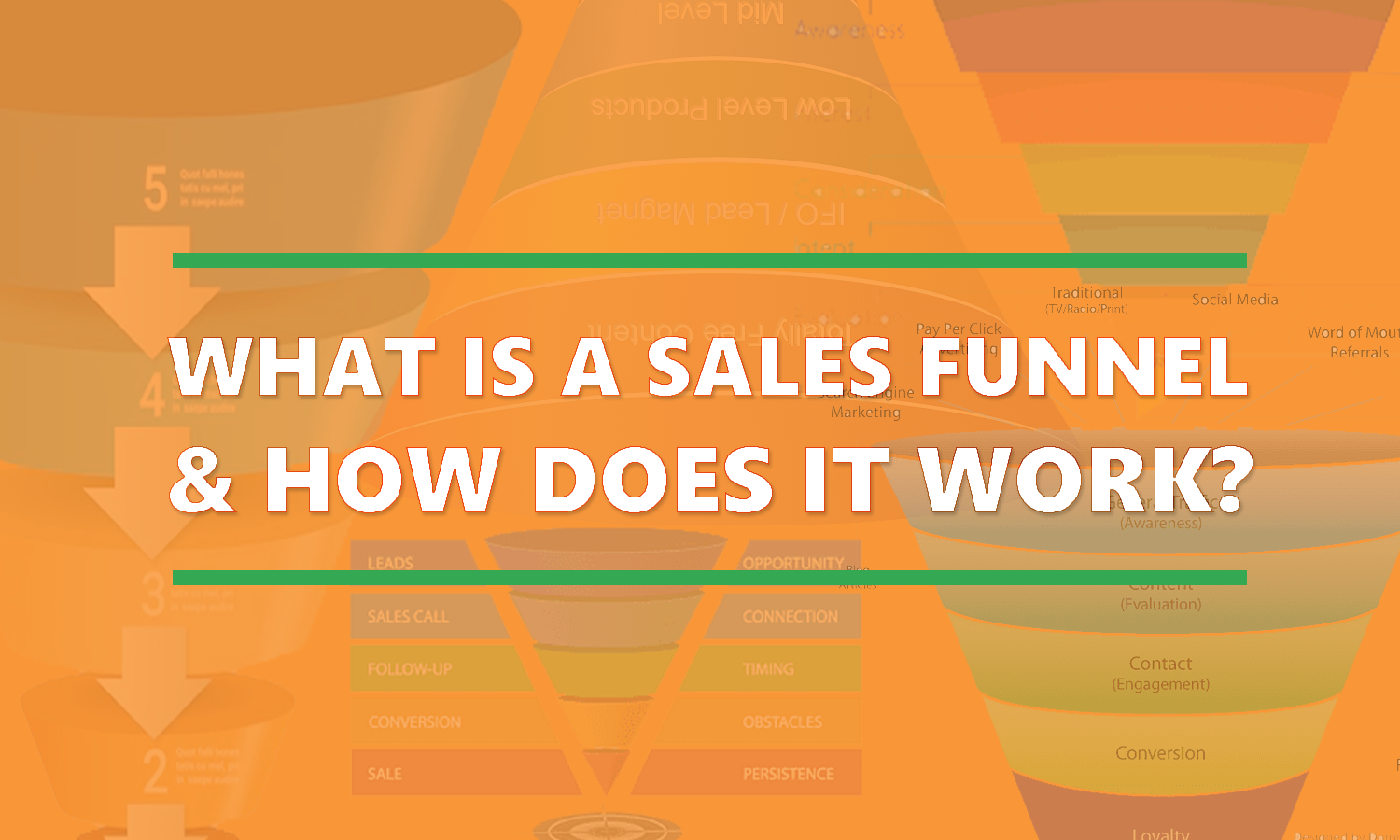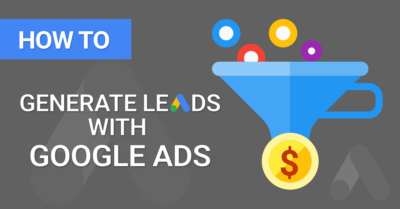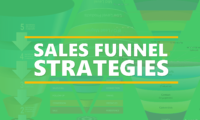There are quite a few different variations of sales funnels you will find online. The general idea and premise behind all of them is relatively the same. What you will find that is different, tends to be the stages. You can find sales funnels in three stages, four stages, five, six and seven stages.
The sales funnels with more stages tend to be more granular and break down the 3 stage funnels into more parts. In this article I will provide an overview of all of the three and five stage funnels so you can understand what they are and how they differ from one another. These tend to be more common and widely used. Additionally, I will provide some some additional stages so you can compare and contrast them.
So, What Is A Sales Funnel?
A sales funnel is a visual way of demonstrating the route a customer takes when buying something. It demonstrates how potential customers, or leads, move through the sales stages, from initial contact to repeat purchases. This process of sales is called a funnel because it is structured like an inverted pyramid, with the biggest number of people exposed to the business at the top, and the smallest number at the bottom.
As customers show interest and take part in the company’s marketing activities, the funnel narrows, indicating a greater level of engagement. Those still interested in the product or service then move down the funnel, with those customers who are not interested opting out. The funnel’s marketing strategies should eventually lead to the customer making a purchase and becoming a client or customer. Enhancing the funnel’s effectiveness should be the aim. Further reading: Sales Funnel Strategies
Another way of putting it
A sales funnel is the journey customers take from first hearing about your product to making a purchase. It can be visualized as a funnel with several stages. At the top of the funnel, there’s a wide group of potential customers that your company has yet to reach. As people move further down the funnel and become more engaged with your brand, they are more likely to become customers. A sales funnel can be used to track your company’s marketing efforts, such as advertising campaigns, to see what aspects are working and what could be improved. Ideally, you want a large number of people to go through the top of the funnel and a smaller number to reach the bottom. This shows that your funnel is effective at bringing in new customers but also retaining a portion of them.
The 3 Stages Of A Sales Funnel
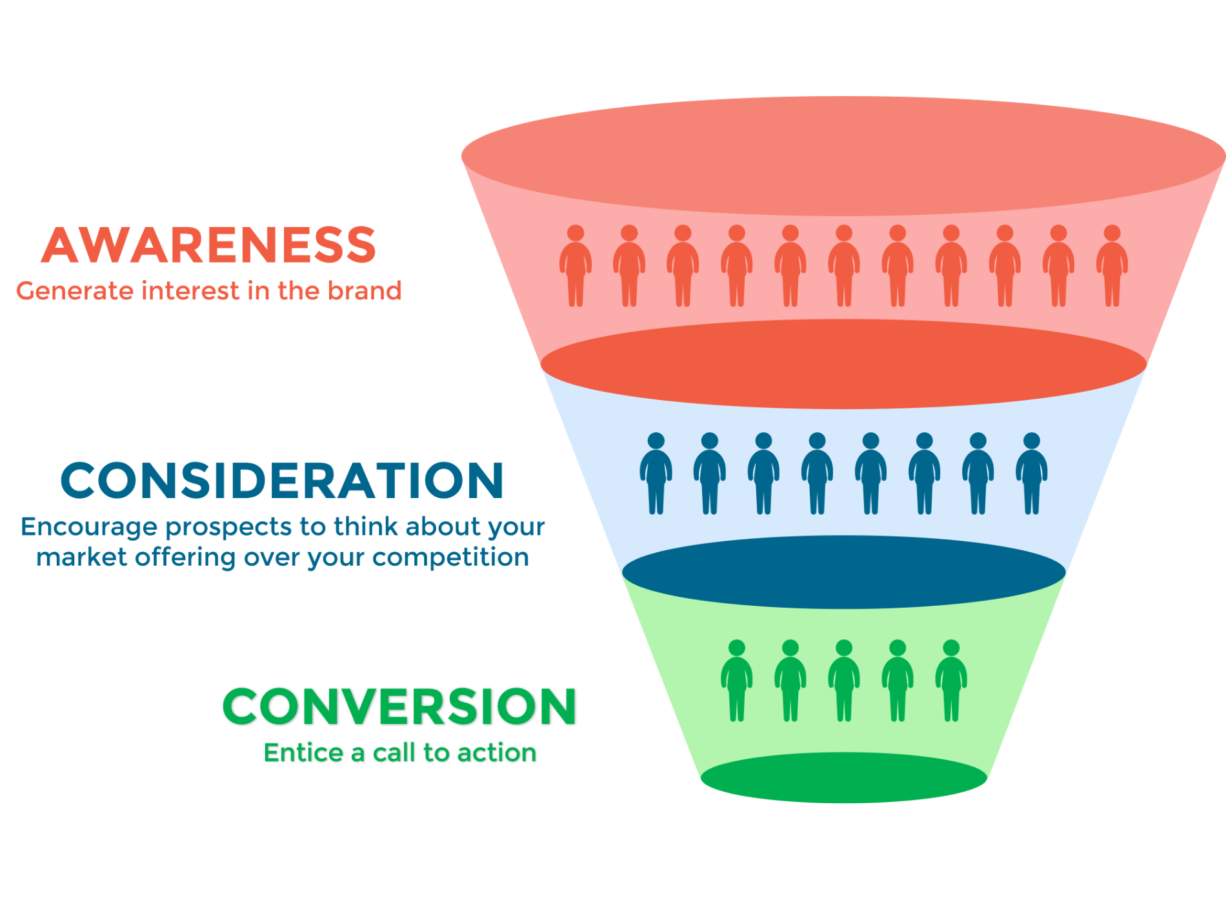
The three stages of a sales funnel are:
- Awareness
- Consideration
- Conversion (Action)
During the awareness stage, potential customers become aware of your product or service. This can happen through various methods such as targeted advertising or word-of-mouth marketing.
Once a customer is aware of your company and offerings, they enter the interest stage. At this point, customers begin researching more about what you have to offer and comparing it with competitors.
Finally, when the customer is ready to make a purchase decision, they reach the action stage where they take the desired action (i.e., buy from you). The goal with a sales funnel is to guide customers through each stage as effectively as possible so they become engaged with your business and convert to paying customers.
One of the keys to a sales funnels is knowing your target audience. These are the people you think might be interested in your product or service. And, will ultimately become paying customers. Learn how to identify your target audience.
Awareness
The awareness stage is the top of the sales funnel. During this stage, potential customers become aware of your product or service. This can happen through various methods such as targeted advertising or word-of-mouth marketing. Some examples are marketing campaigns that run on TV, in print publications, or online. Word-of-mouth advertising can happen when satisfied customers recommend your product or service to their family and friends. The goal of the awareness stage is to make people aware of your product or service so they will enter the next stage. With the increased use of ad blocking software, marketers are now focused on creating content that’s worth sharing as opposed to ads that are meant to be ignored.
Consideration
The interest stage is when customers start to become more engaged with your company. This may come from reading articles about your business or talking to a sales representative. At this stage, customers are researching your product or service, as well as how it compares to competitors. They may also be reading user reviews or browsing your website to learn more. The goal of the interest stage is to get customers to become more engaged with your brand. Engaged customers are more likely to become paying customers, so it’s important to nurture this engagement and conversion process as much as possible. There are many ways to keep customers engaged throughout the sales funnel. You can create engaging content on your website or blog. You can also have sales representatives that are engaging and provide high-quality customer service. These efforts will help keep customers engaged with your business and more likely to move to the next stage of the funnel.
Conversion (Action)
The action stage is when customers are ready to make a purchase decision. Customers may make this decision in person at your store or online. The goal of the action stage is to get customers to take action and become paying customers. You can track the conversion rates of each stage of the funnel to see how effective your sales funnel is at getting customers to make a purchase. Ideally, you want a large number of people to go through the top of the funnel and a smaller number to reach the bottom. This shows that your funnel is effective at bringing in new customers but also retaining a portion of them. You can optimize your funnel to increase the number of customers in each stage of the funnel by making changes to your marketing strategy.
The 4 Stages Of A Sales Funnel
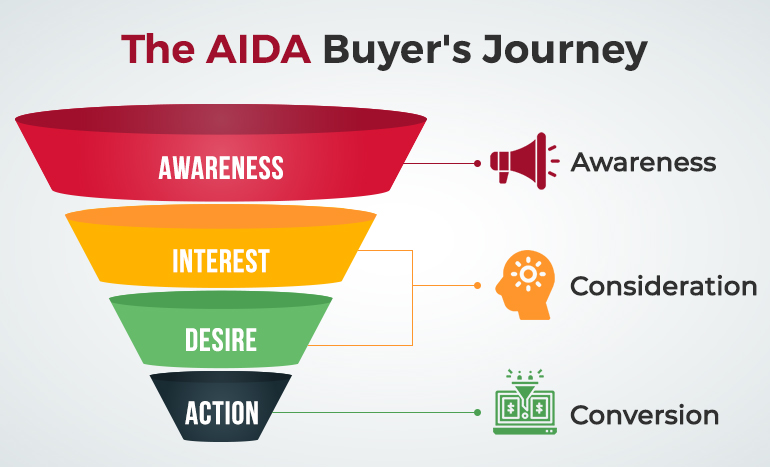
The base of the four stage funnel (also known as the AIDA sales funnel) is the three stage funnel. This funnel wedges the desire stage in between the interest and action stages. In this funnel the consideration stage is broken into two parts: the interest and desire stage.
Desire
The desire stage of a sales funnel is when the customer begins to develop an emotional connection to your product or service. During this stage, customers start looking into the features and benefits of what you have to offer and determine if it would meet their needs. Additionally, customers might be encouraged by incentives such as discounts or exclusive offers which can grab their attention and create loyalty.
At this stage, it’s important for businesses to provide compelling content such as testimonials and reviews in order to help the customer move further down the funnel towards taking action.
The 5 Stages Of A Sales Funnel
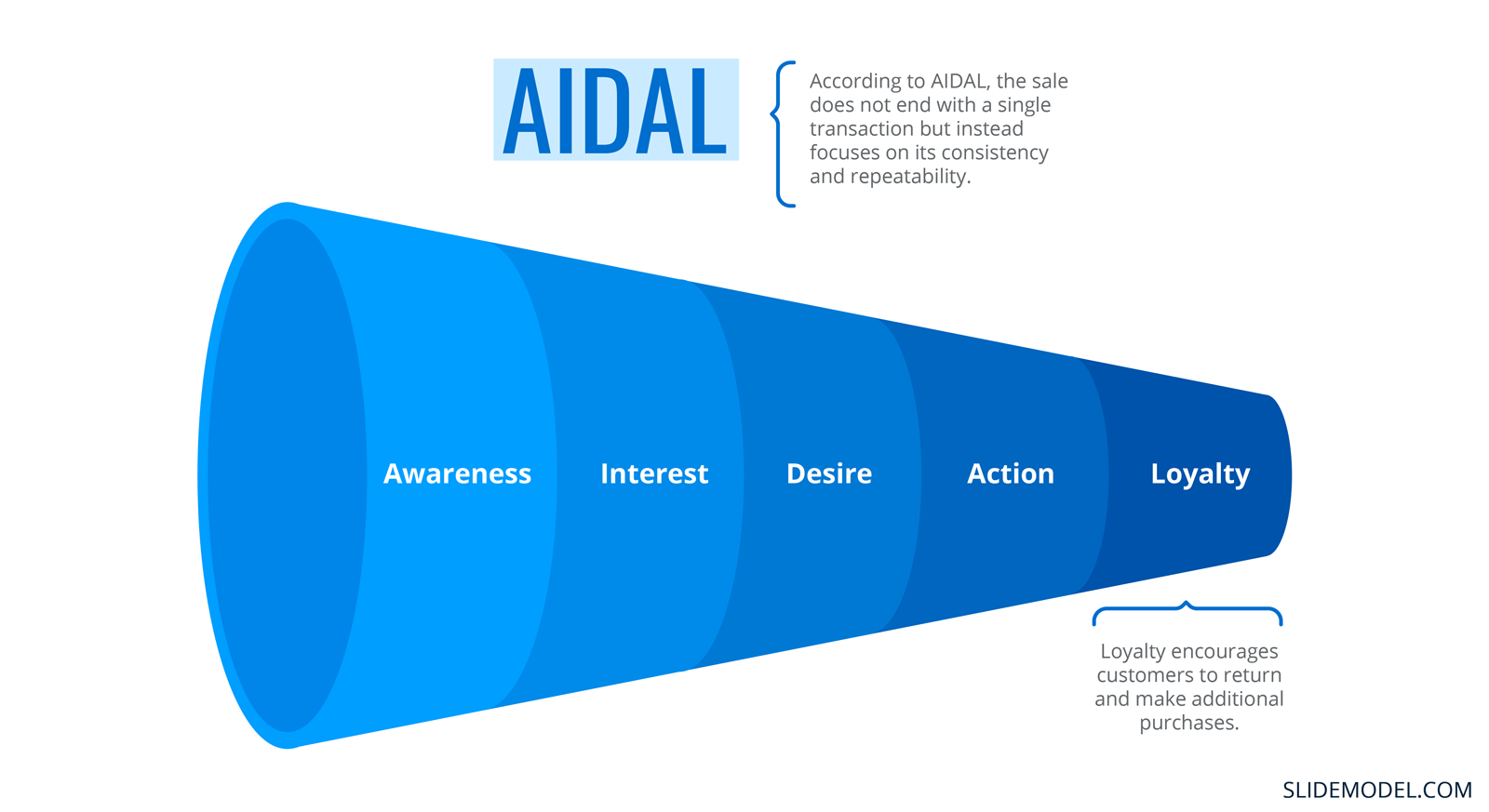
The five stages of a sales funnel include:
- Awareness
- Interest
- Desire
- Action
- Loyalty
Ok, so I am not going to break down the awareness, interest, desire or action stages as we have already covered them. I will cover the loyalty stage as this is the one addition in the five stage funnel.
Loyalty
The loyalty stage of a sales cycle is when the customer has made a purchase and is now a loyal customer. Or, you hope they become a loyal customer. This is the stage that comes after the action stage in the three stage funnel. At this stage, customers become repeat customers who provide valuable feedback and referrals for more business.
It’s important for businesses to reward loyal customers in order to encourage them to continue buying from them. This can be done through special offers, discounts, loyalty programs or rewards. Additionally, businesses should continue providing great customer service in order to keep customers happy and coming back.
Additional Stages To Consider
There is no right or wrong answer to how many stages are in a sales funnel. Some businesses may find the simplicity of a three stage funnel works best for them. While other businesses may want to get more granular with a five or six stage funnel. Below I will cover some additional stages and go over how the can fit into the entire sales cycle discussion.
Ambassador stage
The ambassador stage of a sales funnel refers to the point at which a customer has had a positive experience with a company or its products/services and becomes an advocate for the brand.
At this stage, the customer may make referrals to friends, family, or colleagues, post positive reviews or testimonials, or even promote the brand through social media or other channels. This stage is also known as the referral stage. Customers in this stage of the sales funnel have already converted and become a customer, and they are more likely to make more purchases and advocate for the brand.
Adding this to the five stage funnel above would give you a six stage funnel like this:
- Awareness
- Interest
- Desire
- Action
- Loyalty
- Ambassador
Re-Engagement stage
The re-engagement stage of a sales funnel refers to the point at which a company attempts to bring back previous customers who have not made a purchase or engaged with the brand in some time. This stage is also known as the “win-back” stage.
The goal of re-engagement is to remind the customer of their past positive experiences with the brand and encourage them to make another purchase. Re-engagement strategies can include targeted email campaigns, special promotions or discounts, or personalized communication with the customer. The idea behind re-engagement is to bring back customers that have had a positive experience before and were engaged, but haven’t interacted for a certain period of time.
This stage would come after the action stage or loyalty stage.
How To Optimize Your Sales Funnel
There are many ways to optimize your sales funnel. Some tactics include optimizing your marketing campaigns to reach a wider audience. This includes adjusting your messaging, targeting the right customers, and using appropriate marketing channels.
You can also increase customer engagement through various methods such as hosting live events or creating engaging content on your website or blog. By increasing customer engagement, you are more likely to see customers move through the sales funnel and become paying customers.
For more insight into strategies, read Sales Funnel Strategies which has an ever-growing list of tactics and tips you can take at different stages of the sales funnel.
Conclusion
A sales funnel is the journey customers take from first hearing about your product to making a purchase. It can be visualized as a funnel with several stages.
At the top of the funnel, there’s a wide group of potential customers that your company has yet to reach. As people move further down the funnel and become more engaged with your brand, they are more likely to become customers. The three stages of a common sales funnel are awareness, interest, and action. During the awareness stage, potential customers become aware of your product or service. This can happen through various methods such as targeted advertising or word-of-mouth marketing. Once a customer is aware of your company and offerings, they enter the interest stage.
At this point, customers begin researching more about what you have to offer and comparing it with competitors. Finally, when the customer is ready to make a purchase decision, they reach the action stage where they take the desired action (i.e., buy from you).
Additionally, there are several different types of sales funnels you can implement. There is no one-size fits all funnel and what works for one business may not be the best sales funnel for your business. Don’t be holden to an initial funnel. Start with one that you like and feel free to adapt and expand it as needed. It is common for business to begin with a simple approach (such as the three stage funnel) and get more granular with different strategies which ultimately expands the funnel with additional stages.

